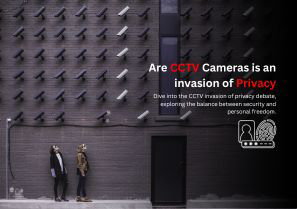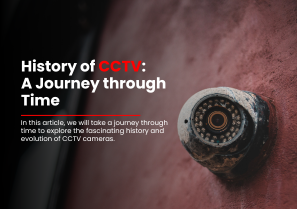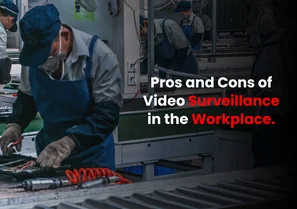In today’s increasingly connected world, the use of security cameras, particularly CCTV cameras, has become pervasive in both public and private spaces. The question of whether CCTV cameras are an invasion of privacy has sparked debates and discussions. While these cameras serve important purposes such as crime prevention and evidence gathering, concerns about privacy infringement have also been raised.
In this article, we will explore the different perspectives surrounding the use of CCTV cameras and delve into the privacy laws and regulations governing their deployment. We will also examine the potential challenges and drawbacks associated with CCTV surveillance. By understanding the various aspects of this issue, we can gain a comprehensive view of the impact and implications of CCTV cameras on privacy.

The Purpose of CCTV Cameras
CCTV cameras, or closed-circuit television cameras, are widely used as a security measure in various settings, including public spaces, businesses, and residential properties. These cameras are designed to monitor and record activities within their range of coverage. They play a crucial role in deterring criminal activities, providing evidence for investigations, and enhancing public safety.
While the primary purpose of CCTV cameras is to ensure security and protect people and property, concerns about invasion of privacy arise when the boundaries of surveillance are crossed. It is essential to strike a balance between the benefits of surveillance and respecting individuals’ rights to privacy.
Privacy Laws and Consent Regulations
Privacy laws and consent regulations are crucial in determining the legality and ethical considerations surrounding the use of CCTV cameras. In the United States, citizens are entitled to privacy, and various rules and guidelines apply to the use of video and audio recordings in different contexts.
It is generally accepted that CCTV cameras should not infringe upon the privacy of individuals. To ensure compliance with privacy laws, it is important to understand the distinction between public and private spaces and the expectations of privacy associated with each. For instance, placing cameras in areas such as bathrooms or bedrooms would be considered a breach of privacy.
Furthermore, consent laws vary from state to state. Some states require consent from all parties involved in a conversation to record audio, while others follow the “one-party consent” rule, where only one party needs to be aware of the recording. It is essential to be familiar with the specific regulations in your state to ensure compliance with the law.
Potential Privacy Concerns
While CCTV cameras serve important security purposes, there are potential privacy concerns that need to be addressed. It is essential to strike a balance between maintaining public safety and respecting individual privacy rights. Let’s explore some of the key privacy concerns associated with CCTV surveillance:
Intrusion into private spaces: CCTV cameras should not be placed in areas where individuals have a reasonable expectation of privacy, such as bedrooms, bathrooms, or changing rooms. Placing cameras in such spaces would be a clear invasion of privacy.
Hidden or undisclosed cameras: Cameras that are hidden or placed without consent raise significant privacy concerns. It is important to ensure that cameras are visible and their presence is communicated to individuals in the vicinity. Transparency is crucial to maintaining privacy rights.
Recording audio without consent: Recording audio without the consent of all parties involved in a conversation can be a violation of privacy laws. It is important to understand the consent requirements in your state and adhere to them when using CCTV cameras.
Discriminatory targeting: There have been instances where CCTV operators have disproportionately focused their surveillance on individuals based on race or ethnicity. This discriminatory targeting raises concerns about privacy violations and reinforces biases within the surveillance system.
Abuse by authorities: The deployment of CCTV cameras can create opportunities for abuse by law enforcement or other authorities. Instances of misuse, such as unauthorized access to personal information or voyeuristic behavior, highlight the need for checks and balances to prevent abuse of surveillance systems.

The Effectiveness of CCTV Cameras
One of the primary justifications for the widespread use of CCTV cameras is their effectiveness in deterring crime and enhancing public safety. However, there are ongoing debates about the actual effectiveness of these surveillance systems.
Studies conducted in countries where CCTV cameras have been extensively deployed, such as the United Kingdom, have yielded mixed results. While some studies suggest that CCTV cameras have led to reductions in certain types of crime, others indicate that overall crime rates remain unaffected. It is important to consider these findings when assessing the impact of CCTV cameras on public safety.
Moreover, it is worth noting that CCTV cameras are often more effective in preventing petty crimes rather than deterring serious criminal activities or acts of terrorism. The limitations of CCTV cameras in combating complex security threats should be acknowledged, and alternative approaches should be considered.
Balancing Security and Privacy
As society continues to grapple with the challenges posed by CCTV surveillance, it becomes evident that striking a balance between security and privacy is crucial. It is possible to utilize CCTV cameras responsibly while respecting individuals’ privacy rights. Here are some considerations for achieving this balance:
Clear guidelines and regulations: Governments and regulatory bodies should establish clear guidelines and regulations regarding the use of CCTV cameras. These guidelines should address issues such as camera placement, consent requirements, and limitations on surveillance.
Transparency and communication: It is essential to inform individuals about the presence of CCTV cameras in public spaces. Clear signage and communication help create awareness and foster a sense of transparency.
Oversight and accountability: Implementing mechanisms for oversight and accountability is crucial to prevent abuse and misuse of CCTV systems. Regular audits, public reporting, and independent review boards can help ensure that surveillance is conducted within legal and ethical boundaries.
Technological advancements: As technology evolves, it is important to assess the potential impact of new surveillance capabilities. Striking the right balance between security needs and privacy concerns requires ongoing evaluation and adaptation to changing circumstances.

Conclusion
In conclusion, the use of CCTV cameras raises important questions about privacy, security, and individual rights. While these cameras play a vital role in deterring crime and enhancing public safety, it is essential to ensure that their deployment respects privacy laws and regulations. By implementing clear guidelines, fostering transparency, and maintaining oversight, it is possible to strike a balance between security and privacy in the age of surveillance technology.
As technology continues to advance, the conversation around CCTV cameras and privacy will evolve. It is crucial for policymakers, law enforcement agencies, and individuals to engage in an ongoing dialogue to address the challenges and concerns associated with CCTV surveillance. Only through thoughtful consideration and proactive measures can we navigate this complex landscape and safeguard both security and privacy in our society.









